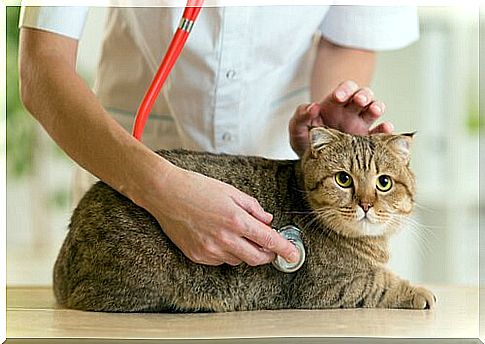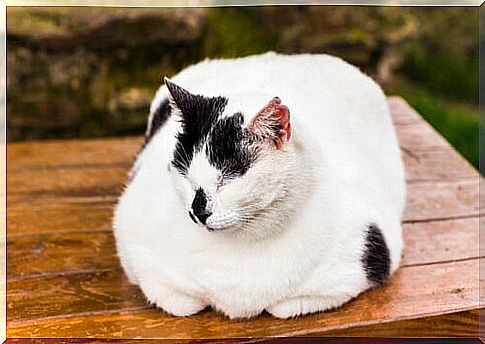Diabetes In Cats: Causes, Symptoms And Treatment

Diabetes is a disease that affects millions of people. It is characterized by the presence of high concentrations of glucose in the blood due to a defect in insulin production. This is the hormone responsible for transporting that aldehyde monosaccharide to the cells.
An alarming number of cats are starting to suffer from this disease. If diabetes is not diagnosed in time, the consequences for your feline friend can be very serious. From simple weight gain to vomiting, dehydration, severe depression, coma and even death. In this article we will tell you everything you need to know about this annoying, and dangerous, ailment.
Causes and symptoms of diabetes in cats
This chronic disease falls within the framework of the pathologies indicated with the term diabetes mellitus, linked to hyper and hypoglycemic conditions. It manifests itself in cats in a similar way to how it manifests in people. You will need to pay particular attention to the symptoms that your pet experiences, in order to be able to intervene as effectively as possible.

Here is a list of some possible warning signs that will help you understand if your cat has diabetes:
- Increased thirst ( polydipsia ) and urine production ( polyuria ). They are the most common and visible symptoms.
- Weight loss or weight gain ( polyphagia ). Polyphagia is defined as excessive and uncontrollable hunger that typically occurs in people prone to diabetes.
- Loss of hair.
- Cataracts, although this symptom is more common in dogs than cats.
- Urinary tract infection.
- Weakness.
- Odor of acetone and halitosis. This is a symptom derived from ketosis, a metabolic process caused by a carbohydrate deficiency , in which acetone and compounds are released into the blood and urine.
All of these symptoms result from the animal’s inability to use glucose as an energy source. You have to keep in mind that diabetes in cats occurs mainly after six years of life, and that males are more prone to suffer from it.

One of the main risk factors is obesity, because an overweight cat or person tends to have higher blood insulin than normal. Another risk factor is suffering from an endocrine disease, such as acromegaly , a condition caused by excessive secretion of growth hormone.
Prevention and treatment
The good news is that diabetes is a disease that can be prevented and also treated very effectively. The major problems, if anything, arise from a late diagnosis of the problem. Such delay can cause serious consequences or even lead to the death of the animal. The most recent studies show that between 17 and 52% of domestic cats show a condition of obesity. A too sedentary lifestyle at home, along with an unbalanced diet, are usually the main cause of this problem.
In the case of diabetes, prevention and treatment go hand in hand. A change in the diet of a diabetic cat has been shown to lead to a gradual but important normalization of insulin levels. Therefore, it can certainly be said that providing your cat with a balanced diet is the best way to prevent and manage diabetes.

Of course, your veterinarian’s recommendations in this regard are essential when establishing the best strategy for treating diabetes in cats. The most common form of treatment is the administration of slow-acting insulin doses, twice a day.
Two doses are recommended because the metabolism in cats is faster than in humans. Therefore, it is important to use a specific type of insulin for animals and not the one that is artificially processed for people.
The forms of insulin used in animals are of bovine or porcine origin. However, cats respond unpredictably to external insulin administration. For this reason, the experience and ability of the veterinarian are essential elements for choosing the most suitable treatments, depending on the case, for diabetes in cats.









